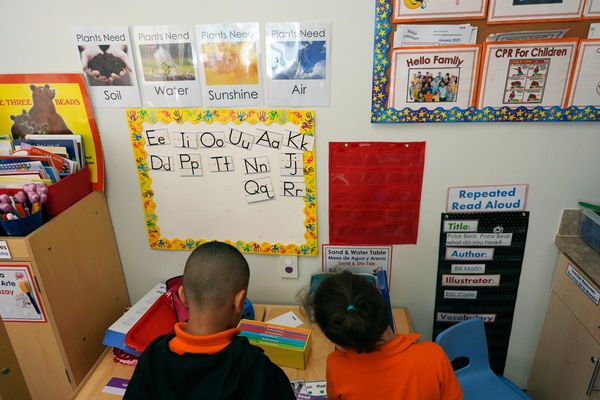
April WTI crude oil (CLJ25) Wednesday closed down -0.31 (-0.45%), and April RBOB gasoline (RBJ25) closed down -0.0232 (-1.05%).
Crude oil prices Wednesday settled moderately lower, with crude falling to a 2-1/4 month low and gasoline sliding to a 2-month low. Economic concerns weighed on crude prices Wednesday after US Jan new home sales fell more than expected. Crude prices were already on the defensive from Tuesday when the US Feb consumer confidence index dropped to an 8-month low. Dollar strength Wednesday was also bearish for energy prices. However, crude recovered from its worst levels Wednesday after weekly EIA crude inventories unexpectedly declined.
Wednesday's global economic news was weaker than expected and negative for energy demand and crude prices. US Jan new home sales fell -10.5% m/m to 657,000, weaker than expectations of 680,000. Also, the German Mar GfK consumer confidence index unexpectedly fell -2.1 to an 11-month low of -24.7, weaker than expectations of an increase to -21.6.
Oil prices were also undercut Wednesday after Iraq's oil minister said his country had reached an agreement with Kurdistan to resume exporting crude via an oil pipeline through Turkey. However, the ministry said Iraq would remain within its OPEC production cap. Those pipeline shipments of about 185,000 bpd have been shut down for the past two years due to a payment dispute.
Oil prices continue to be undercut by the thaw in US-Russian relations and possible peace talks on the Russia-Ukraine war, which could eventually lead to reduced sanctions on Russia and the full resumption of Russian oil exports.
Crude found support last week on a drone attack on a Russian pumping station that could reduce Kazakhstan crude oil exports by 30%. Crude oil prices also found support last Wednesday when Bloomberg reported that OPEC+ is considering a delay of monthly supply increases that are currently due to start in April.
In a supportive factor for crude oil prices, the US on January 10 imposed new sanctions on Russia's oil industry that could curb global oil supplies. The measures targeted Gazprom Neft and Surgutneftgas, which exported about 970,000 bpd of Russian crude in the first 10 months of 2024, accounting for about 30% of its tanker flow, according to Bloomberg data. The US also targeted insurers and traders linked to hundreds of tanker cargoes. Weekly vessel-tracking data from Bloomberg showed Russian crude exports fell by -130,000 bpd to 3.09 million bpd in the week to February 2. Russian oil production fell to 8.062 million bpd in January, which was -16,000 bpd below its OPEC+ quota.
Crude oil demand in China has weakened and is a bearish factor for oil prices. According to Chinese customs data, China's 2024 crude imports fell -1.9% y/y to 553 MMT. China is the world's biggest crude importer.
A decline in crude oil held worldwide on tankers is bullish for oil prices. Vortexa reported Monday that crude oil stored on tankers that have been stationary for at least seven days fell by -12% w/w to 65.65 million bbl in the week ended February 21.
OPEC+ said at its monthly meeting on February 3 that it would not change its oil-production plans in the first quarter but would gradually restore crude output in monthly stages beginning in April. OPEC+ last month pushed back a planned hike of its crude production by +180,000 bpd from January to April and said it would unwind its crude output cuts at a slower pace than planned. OPEC+ had previously planned to restore 2.2 million bpd of output in monthly installments between January and late 2025. However, the date for the completed production increase was pushed back until September 2026. OPEC Jan crude production fell -700,000 bpd to 27.03 million bpd.
Wednesday's weekly EIA report was mixed for crude and products. On the positive side, EIA crude inventories unexpectedly fell -2.3 million bbl versus expectations of a +2.4 million bbl build. Conversely, EIA gasoline supplies unexpectedly rose +369,000 bbl versus expectations of a -1.4 million bbl draw. Also, EIA distillate stockpiles unexpectedly rose +3.91 million bbl versus expectations of a -2.76 million bbl draw. In addition, crude inventories at Cushing, the delivery point of WTI futures, rose +1.28 million bbl.
Wednesday's EIA report showed that (1) US crude oil inventories as of February 21 were -4.3% below the seasonal 5-year average, (2) gasoline inventories were -0.1% below the seasonal 5-year average, and (3) distillate inventories were -7.8% below the 5-year seasonal average. US crude oil production in the week ending February 21 was unchanged w/w at 13.502 million bpd, modestly below the record high of 13.631 million bpd from the week of December 6.
Baker Hughes reported last Friday that active US oil rigs in the week ending February 21 rose by +7 to 488 rigs, moderately above the 3-year low of 472 rigs posted January 24. The number of US oil rigs has fallen over the past two years from the 4-1/2 year high of 627 rigs posted in December 2022.







